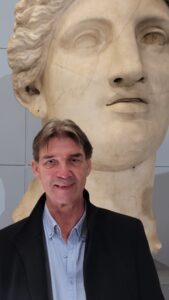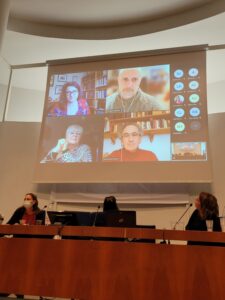The SoPHIA project had its final conference at Roma Tre University in Rome 17-18 December 21. The EU funded project was funded under the Horizon 2020 programme for 24 months and focused on issue of how to understand and assess impact of various interventions on cultural heritage.
The project has included the following phases: (1) literature studies on European and international policy development and research on cultural heritage, (2) developing a preliminary test model for cultural heritage impact assessment model, (3) testing the model in twelve real case studies covering both local and transnational cultural heritage interventions in Europe, (4) revising and finalising the cultural heritage assessment model, (5) establishing a social platform for sharing and discussing cultural heritage impact assessment experiences, and (6) producing a number of policy briefs on the relation between cultural heritage impact assessment and different policy areas. More information is to be found on http://sophiaplatform.eu/en
The project was coordinated by Roma Tre University and the partners were INTERARTS in Barcelona, IADT Dublin, IMRO Zagreb, EDUCULT Vienna, NTUA Athens, and EMA Amsterdam. The PASCAL Learning Cities project has been involved through partnership with EMA and represented on the project advisory board.
EMA and PASCAL organised 4 webinars which included presentation and discussion on the SoPHIA model in the spring 2021 and one in the autumn.


At the final conference the model as well as ways in which it might be implementation was presented and discussed. The project partners presented the model and key notes by Erminia Sciacchitano from the Italian Ministry of Culture and Alessandro Rancati from the European Commission’s Science Centre, and we further discussed the model , and its usefulness.
Several important issues were mentioned including who such a cultural heritage impact assessment model is made for and who will use it? Will the final user be the small or medium size museum or heritage site, or will it be other funding authorities? Will private business find a use for the model? This led to discussions of how the model can be used in selected parts and how such an approach will impact the quality of the results.
Another question was about the political context of the model. It was mentioned that the project call had come from the European Union Commission and therefor it could be expected that the model would fill a need seen on European or member state level. If so, it might even be expected that use of the model could become mandatory at some point in the future. This led to discussion about the potential counter productive effect of any such mandatory measure as it may deter many cultural heritage organizations from taking initiatives at all. Bureaucracy is often seen as tending to have that effect on entrepreneurs in the creative sector.
The project has delivered according to the original project plan and a short presentation of the model and the main areas of discussion around it will be included in a forthcoming coming PASCAL LCN meeting 24 January.
Please contact us should you wish to participate.
Henrik Zipsane & Rob Mark
rob.mark@glasgow.ac.uk
22 December 2021
